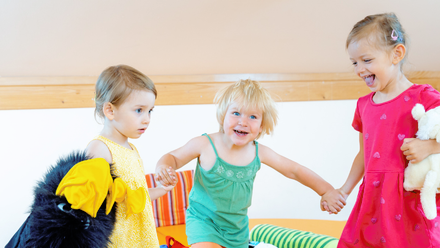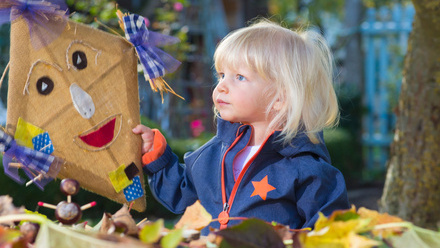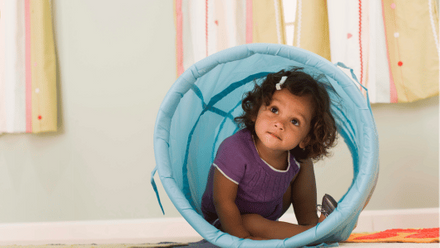How to create an active learning environment indoors
Establishing physical activity as a routine within the first five years of life is such a significant factor to healthy development throughout life. However, a recent study has found that just 19% of children under the age of six are achieving the recommended guidelines of 180 minutes of daily exercise.
One of the most common factors for the lack of opportunities to get active involve the cost of finding safe and accessible spaces to get moving. From the same study, 12% of parents and carers expressed concerns for the safety of outdoor spaces, whilst over a quarter (27%) highlighted the cost of indoor facilities like soft play to be a barrier to accessing physically active areas.
Outdoor areas within early education and care spaces are safe environments where children can explore risky play in fresh air and experience a wide range of exciting outdoor opportunities. But, when the weather lets us down to the extremes, such as the red warnings for wind and ‘danger to life’ of Storm Eunice in February 2022, or the red weather warnings in the summer that same year, it is important to ensure provisions are still available for children to be active and stay moving.
In this learning workout, it’s time to explore some of the ways to stay active when under a roof and think about how this might impact your current practice.
We know that physical movement is crucial to healthy growth for young children, which is why it is so important to maintain a physical activity routine and provide a consistent provision for movement.
Whilst the outdoors environment can be utilised for engaging children in physical activity that gives young children the chance to challenge their sense of risk and enquiry in the natural environment, gross motor skills can also be developed through physical activities that take place indoors.
Indoor activities bring with them different ways to think about encouraging physical development:
- Often settings will be allocated ‘garden time’ that allows outdoor provision at set times of the day. Providing indoor physical activity allows children to engage with active movement throughout the day.
- Indoor environments are great spaces for promoting expressive arts within physical activity by utilising music and light to bring a new sensory experience to body movements.
- Indoor physical activities are accessible to be used in the home learning environment too. For families without access to outdoor spaces like a garden, outdoor play means a special visit out. By enriching the early education and care provision with indoor opportunities for activity, ideas can be communicated home to invigorate their understanding of physical activity at home.
Getting physical
Ideas for non-walking children:
-
Yoga balls are a fun way to get young children experiencing different movements. Supporting a young child to either sit or lay on a yoga ball, gently rocking back and forth or bouncing slightly provides a whole lot of fun in experiencing new motions and sensations.
-
Tummy time is a requisite of infant development, promoting the strong growth of muscle and establishing gross motor skills. Tummy time activities can be made with everyday materials, such as creating sensory bags with zip-lock pouches and easy ingredients like cornflour and water. Sticking them to the floor and encouraging babies to explore them on their tummies not only stimulates their fine motor and co-ordination skills but encourages further gross motor development too!
Ideas for learning-to-walkers:
-
Bumps and stumbles are part of a learner’s journey, more so when that learning is to walk! Physical activities like sensory discos can be used to encourage an exploration of movement, either on the floor, crawling or supported walking. Using sensory lights and rhythmed music, encourage babies to explore their bodies by moving around in different ways to develop a better understanding of balance and coordination when they are getting about.
-
Cruising is a stage before walking that usually occurs with crawling. It refers to babies standing and moving sideways whilst continually holding onto something for support. Cruising can be encouraged by providing activities on raising tables to encourage children to reach up and spend a period of time standing. From maze gyms to loose parts, open-ended provocations work well to provoke curiosity and keep them cruising!
Ideas for established walkers:
-
For children confident on their feet, indoor activity can be seen as a little bit more challenging because more space is required for activity to take place. The indoor environment provides an excellent opportunity for use of physical activity in a mindful capacity, engaging children in activities like yoga. This provides a rich opportunity for children to engage with their bodies and develop a better understanding of what it can do in a calm and peaceful way.
-
Instruction-based games, such as musical statues, are also interesting ways to get children moving through the power of play. These kinds of games are adult-led so work well as circle time activities that allow children to get involved by moving their bodies in their own ways. Whilst discos are also a lot of fun indoors, games like these can also help to develop listening skills and reflexes, whilst also limited the amount of space required to avoid harm.
In summary
- Physical activity is an important aspect of child development and children above 12 months should have at least 180 minutes of activity every day.
- Outdoor environments play a significant part in the development of strong gross motor skills, but indoor provisions can also contribute to encourage a healthy and active lifestyle at all times.
- Early education and care professionals should be role models of consistent physical activity but also communicate home to families to support their understanding and implementation of physical activities in the home learning environment.
Have a look at some of our other physical activity resources to learn more!





